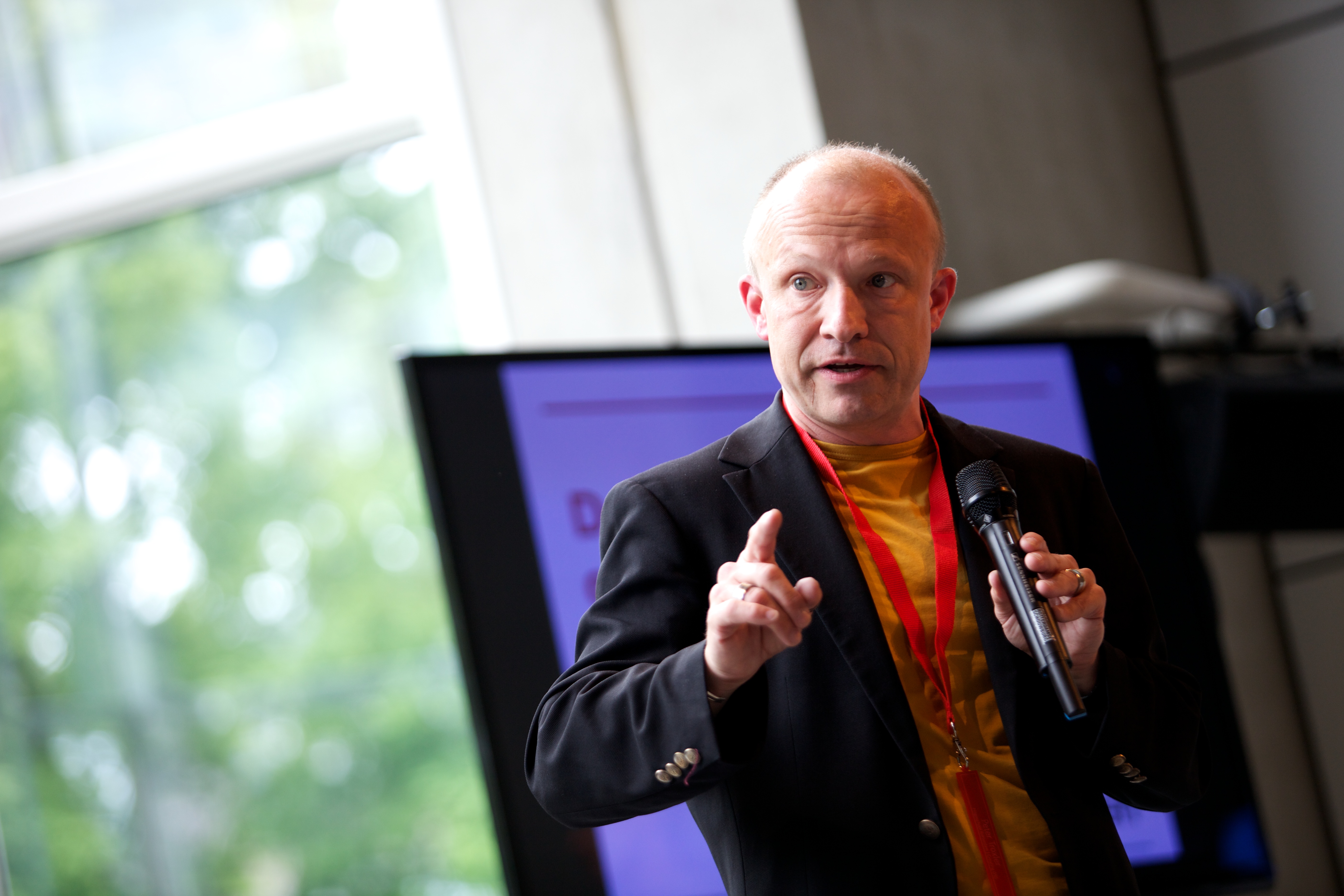
Seminar: Third Industrial Revolution
Jeremy Rifkin foresees a “Third Industrial Revolution” that is triggered by the convergence of the development of the Internet and the emergence of renewable energies. This Third Industrial Revolution is based on lateral structures (networks, co-operation) – as opposed to the hierarchical (centralized, top-down) structures of the 1st and 2n industrial revolutions. His main message to policy makers is about energy and how energy production (and transport) will have to change (the “5 pillars”: shifting to renewable energy sources, particularly buildings, using new energy storage technologies, Internet-enabled energy grid, electric cars). And he also mentions manufacturing that will follow decentralization and adopt lateral structures: “A new digital manufacturing revolution now opens up the possibility of following suit in the production of durable goods. In the new era, everyone can potentially be their own manufacturer as well as their own internet site and power company” (Rifkin, 2011; 117).
This notion of being one’s own manufacturer has been around in the concept of Fab Labs and the idea of a “Maker Movement” since the early years of the 21st century. Mark Hatch, self-declared proponent of the movement and CEO of Techshop wrote the Maker Movement Manifesto. In this text he proclaims that “[m]aking is fundamental to what it means to be human” and paints a picture of a (white? male?) maker who is the opposite incarnation of a junior product manager at a Fortune 500 packaged goods company. He compares the tools in a maker space to “arms” (but then he is a former Green Beret) and believes that the maker movement “will help you become you”.
Sharing and and giving away are (at least according to Hatch) part and parcel of the Maker Movement. The Internet has triggered and builds upon Open Source Software (e.g. two thirds of web servers run on Linux, three quarters of web servers use Open Source Apache to respond to browser requests), and Open Source Software development is one classic example of real-world networked, collaborative structures. Ronen Kadushin, a Berlin-based Israeli designer, has been “doing” Open Design for close to a decade. He relates Open Design to the revolution in manufacturing – as alluded to by Rifkin and Hatch – but also to the “field day” in creativity that the Internet offered to other departments in design such as graphic and game design, but not to product design. His “Hack Chair” is to be read as a personal expression of (exploring the realm of) open product design and as a statement of a product designer freeing himself from the inter-dependencies of traditional, industrial product design, venturing into the arena of being his own manufacturer.
The Third Industrial Revolution with its Internet-based logic of operation and its distributed, networked structure could have a major impact on inventions, creations and designs and how they emerge, how they are materialized and how they get produced and distributed. The Maker Movement according to Hatch and Open Design according to Kadushin stand for a couple of radical declinations of this development of new practices in design. They are examples in a wider array of indicators that there is indeed, also in design and manufacturing, a desire to move away from the centralized, top-down structures of centuries past. It is to be expected, that traditional disciplinary boundaries will further being crossed and broken down even – not only within design, but across whole industrial sectors.
If eventually everybody can (and maybe will) do everything – thus everybody else’s job – there will arise the question why we still would want job descriptions and education for specific jobs. I provisionally would argue, that indeed the job descriptions and the education for a particular job will become much less important. Factual and procedural knowledge can easily be found on the Internet. Specific skills (drafting, coding, sewing, playing the violin) will still require considerable honing. The key to new practices is not the body of knowledge and skills, however, but attitude and approach. It matters if an assignment is seen as the quest for a solution, a design issue, or a request for thorough analysis. It matters if the approach is one of expertise, facilitation, or contribution. When “iedereen = designer” (in terms of knowledge and skills), designerly thinking becomes the key asset. When anybody can be an artist, the critical perspective makes the difference.
References Rifkin, J. (2011). The Third Industrial Revolution: How Lateral Power Is Transforming Energy, the Economy, and the World, Palgrave Macmillan.
^Hatch, Mark (2014). The Maker Movement Manifesto. Rules for Innovation in the World of Crafters, Hackers, and Tinkerers. Sample Chapter. Available online at: http://www.techshop.ws/images/0071821139%20Maker%20Movement%20Manifesto%20Sample%20Chapter.pdf
Rifkin, J. (2012). Beyond Austerity: A Sustainable Third Industrial Revolution Economic Growth Plan For the European Union. An Executive Summary of Jeremy Rifkin’s Keynote Speech for the Mission Growth Summit: Europe at the Lead of the New Industrial Revolution, hosted by The European Commission, May 29th 2012. Available online at http://ec.europa.eu/enterprise/policies/innovation/files/mg-speech-rifkin_en.pdf
^Rifkin, J. (2012a). Industrial Policy Communication Update. A Contribution to Growth and Economic Recovery. Executive Summary. Available online at: http://ec.europa.eu/enterprise/initiatives/mission-growth/files/jeremy-rifkin-industrial-policy-communication-update-executive-summary_en.pdf
^Troxler, P. (2011). The Beginning of a Beginning of the Beginning of a Trend. Portrait of Ronen Kadushin. In: van Abel, B., Evers, L., Klaassen, R. & Troxler, P. (eds.) (2011). Open Design Now. Why Design Cannot Remain Exclusive, pp. 108-115. Amsterdam: BIS publishers. Available online at: http://opendesignnow.org/index.php/article/the-beginning-of-a-beginning-of-the-beginning-of-a-trend-peter-troxler/
Links to the (full) videos
- Jeremy Rifkin at the “Mission Growth” conference, Brussels (May 2012), http://ec.europa.eu/avservices/video/player.cfm?ref=85716, starting around 59:12
- Mark Hatch at World Maker Faire New York (Sept 2013) http://fora.tv/2013/09/22/the_maker_movement_manifesto
- Ronen Kadushin at FabFuse, Amersfoort (Aug 2012) https://vimeo.com/47813027